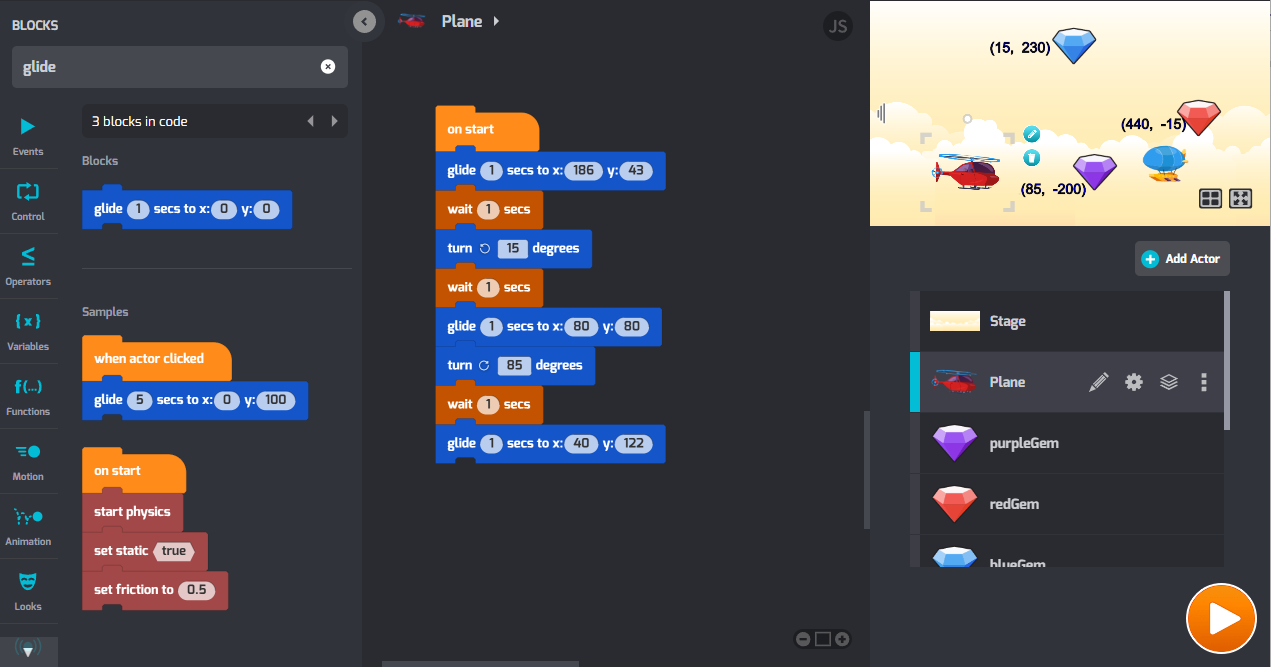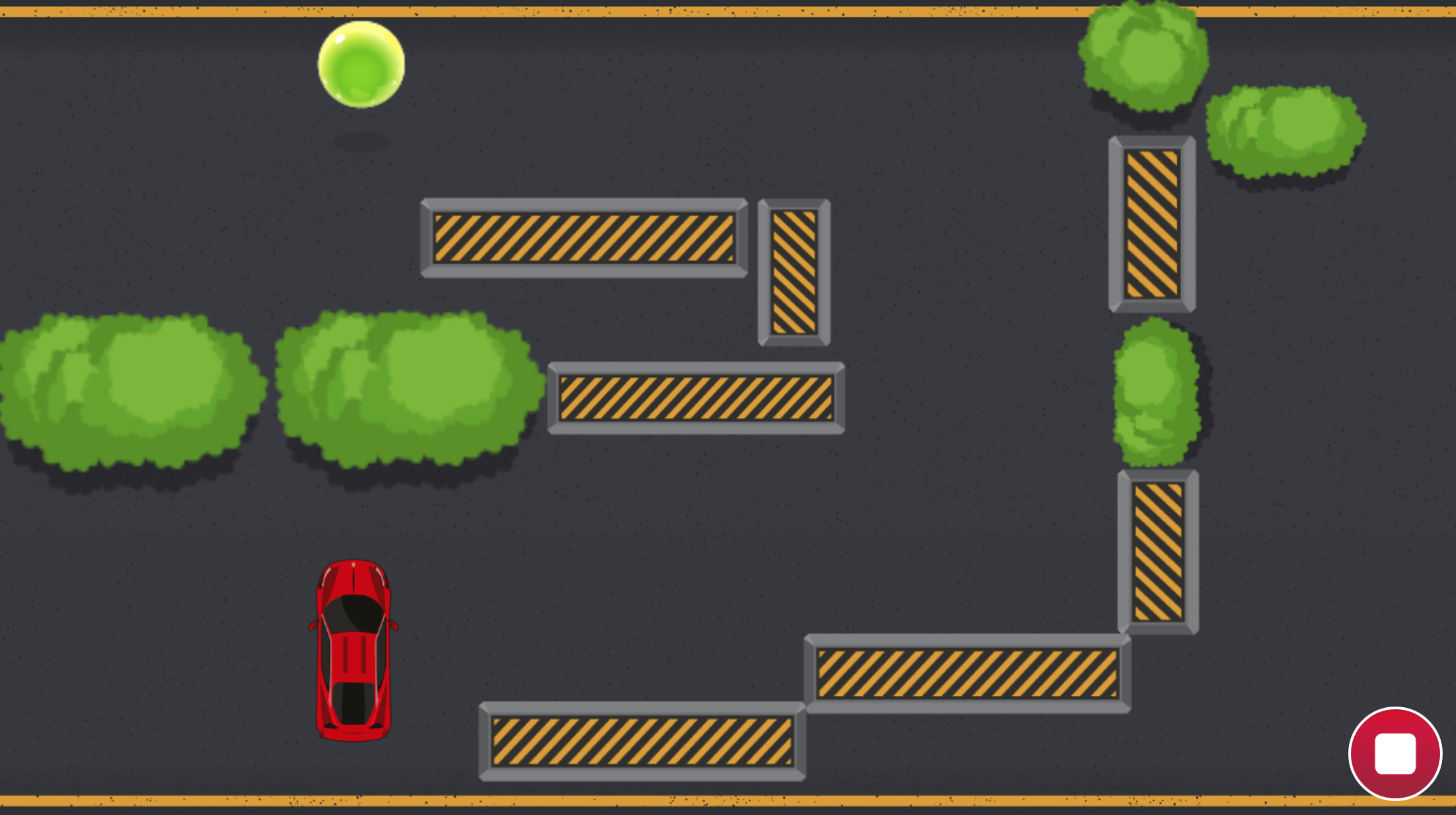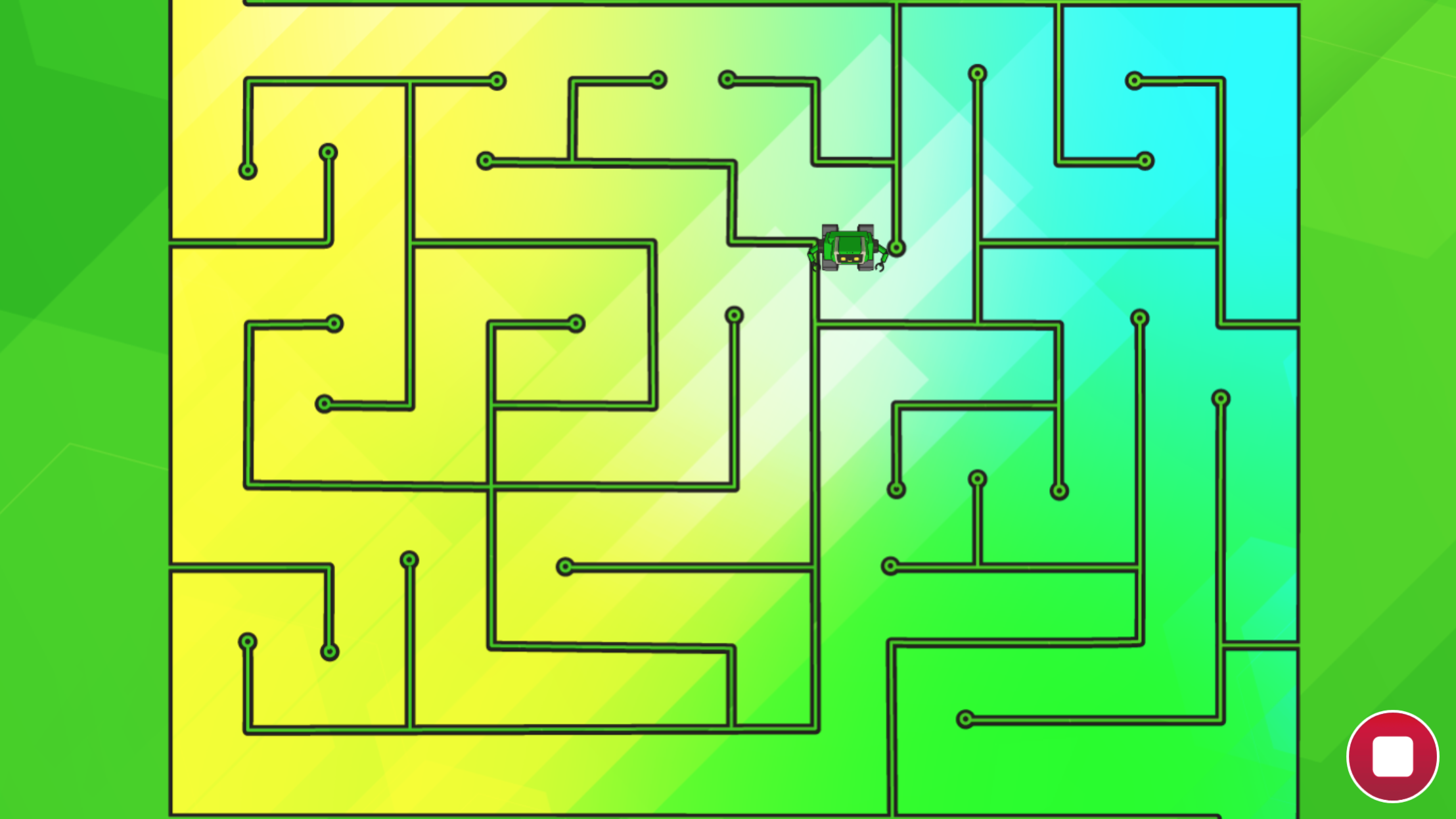Elementary School course
Programming 101
- GRADES 3-4
- BEGINNER
- WEB IPAD
- 15 LESSONS
-
 Voiceovers
Voiceovers
Answer Key
Module 14: Colored Lines

Module 16: Quiz
1.
-

{"func":"blockPenStamp"}
-
{"func":"registerSpriteTrigger","next":{"func":"blockLooksShow"}}
-
{"func":"blockControlForever","containers":[{"func":"blockLooksShow"}]}
-
{"func":"blockMotionPointTowards","values":[{"type":"string","value":"self"}],"next":{"func":"blockMotionMove","values":[{"type":"number","value":"10"}]}}
2.
-

{"func":"registerSpriteTrigger"}
{"func":"registerKeyTrigger","values":[{"type":"choice","value":"space"}]}
-
{"func":"registerFlagTrigger"}
{"func":"registerSpriteTrigger"}
-
{"func":"registerBroadcastTrigger","values":[{"type":"string","value":""}]}
{"func":"registerFlagTrigger"}
-
{"func":"registerKeyTrigger","values":[{"type":"choice","value":"space"}]}
{"func":"registerKeyTrigger","values":[{"type":"choice","value":"space"}]}
3.
{"func":"registerSpriteTrigger"}
-

{"func":"blockPenStamp","next":{"func":"blockLooksNextCostume"}}
-
{"func":"blockPenStamp","next":{"func":"blockMotionMove","values":[{"type":"number","value":"10"}]}}
-
{"func":"blockLooksNextCostume","next":{"func":"blockLooksShow"}}
-
{"func":"blockLooksNextCostume","next":{"func":"blockLooksHide"}}
4.
-

Lets you save the blocks to use in other programs -
Deletes the blocks -
Nothing, there is no backpack -
Makes the code blocks run
5.
-

True -
False
6.
-

{"func":"blockPenStamp"}
-
{"func":"blockControlForever","containers":[null]}
-
{"func":"blockControlRepeat","values":[{"type":"number","value":"10"}],"containers":[null]}
-
{"func":"blockControlRepeat","values":[{"type":"number","value":"20"}],"containers":[null]}
7.
{"func":"blockControlRepeat","values":[{"type":"number","value":"10"}],"containers":[{"func":"blockPenStamp"}]}
-

You will now stamp 20 times instead of 10 -
Nothing changes -
You will not stamp anymore -
You will never stop stamping
8.
-

{"func":"blockPenDown"}
-
{"func":"blockPenSetFont","values":[{"type":"choice","value":""},{"type":"choice","value":""},{"type":"choice","value":""}]}
-
{"func":"blockMotionMove","values":[{"type":"number","value":""}]}
-
{"func":"blockControlForever","containers":[null]}
9.
{"func":"blockPenDown"}
-

True -
False
10.
{"func":"registerSpriteTrigger"}
-

{"func":"blockPenStamp","next":{"func":"blockLooksNextCostume"}}
-
{"func":"blockPenStamp","next":{"func":"blockMotionMove","values":[{"type":"number","value":"10"}]}}
-
{"func":"blockLooksNextCostume","next":{"func":"blockLooksShow"}}
-
{"func":"blockLooksNextCostume","next":{"func":"blockLooksHide"}}
U.S. Standards
- CCSS-Math: 3.NBT.A.2, MP.1
- CCSS-ELA: RF.3.4.A, RF.4.4.A
- CSTA: 1B-AP-11, 1B-AP-12, 1B-AP-15
- CS CA: 3-5.AP.13, 3-5.AP.14, 3-5.AP.17
- ISTE: 1.c, 1.d, 4.d, 5.c, 5.d, 7.c
U.K. Standards
Key stage 2
Pupils should be taught to:- design, write and debug programs that accomplish specific goals, including controlling or simulating physical systems; solve problems by decomposing them into smaller parts
- use sequence, selection, and repetition in programs; work with variables and various forms of input and output
- use logical reasoning to explain how some simple algorithms work and to detect and correct errors in algorithms and programs
- understand computer networks, including the internet; how they can provide multiple services, such as the World Wide Web, and the opportunities they offer for communication and collaboration
- use search technologies effectively, appreciate how results are selected and ranked, and be discerning in evaluating digital content
- select, use and combine a variety of software (including internet services) on a range of digital devices to design and create a range of programs, systems and content that accomplish given goals, including collecting, analysing, evaluating and presenting data and information
- use technology safely, respectfully and responsibly; recognise acceptable/unacceptable behaviour; identify a range of ways to report concerns about content and contact
Lesson 11: Pen Drawing
Course: | iPad Web
-
Dr. Glitch's STAMPede
-
Stamp Machine Example
-
Stamp Machine
-
Stamp Machine 2 Example
-
Stamp Machine 2
-
Pattern Maker Example
-
Pattern Maker
-
Drawing Machine Example
-
Drawing Machine
-
Pen Color and Shade Example
-
Pen Color and Shade
-
Drawing Machine Deluxe Example
-
Drawing Machine Deluxe
-
Colored Lines
-
Dr. Glitch Has Made a Mess
-
Quiz
Description
An easy introduction to programming for beginners in lower elementary grades. Familiarize your class with visual programming techniques. Students progress through the lessons learning concepts in a game-like interface. To complete each lesson, students typically go through a concept review, solve a puzzle, run through a tutorial, build their own project, and take a quiz. They create interactive stories, animations, and mini-games to help Professor Ada battle the evil Dr. Glitch! After completing this lesson plan, students will be able to build a wide variety of simple programs with events, loops, and some conditional logic.
Topics
- Sequencing
- Repetition
- Events
- Conditional logic
- Animation
- Pen drawing
- Drawing shapes and patterns
- Playing musical notes
- Sending and receiving messages
- Handling user input
- Color detection
What Students Learn
- Design animated characters
- Create interactive scenes
- Make animated birthday cards
- Write cartoon stories
- Create a music machine
- Experiment with math art
- Design and build small games
- Troubleshoot and debug simple programs
Technical Requirements
* Online courses require a modern desktop computer, laptop computer, Chromebook, or Netbook with Internet access and a Chrome (29+), Firefox (30+), Safari (7+), or Edge (20+) browser. No downloads required.
* Tablet courses require an iPad (iOS 10+) with Tynker or Tynker Junior app installed and Internet access















